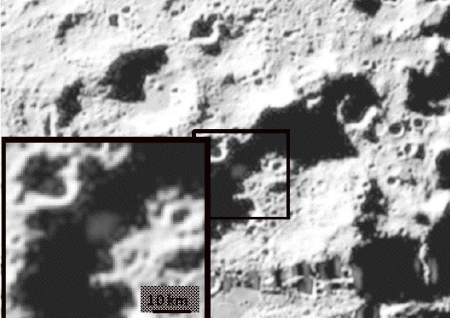NASA has confirmed the presence of water in the permanently shadowed region of the Cabeus lunar crater.
“Preliminary data from the Lunar CRater Observation and Sensing Satellite, or LCROSS, indicates that the mission successfully uncovered water during the Oct. 9, 2009 impact into the Cabeus crater,” NASA explained in an official statement.

“The impact created by the LCROSS Centaur upper stage rocket created a two-part plume of material from the bottom of the crater. The first part was a high angle plume of vapor and fine dust and the second a lower angle eject a curtain of heavier material. This material has not seen sunlight in billions of years.”
According to NASA’s Michael Wargo, the results of the LCROSS mission are helping scientists to “unlock” the mysteries of the moon and solar system.
“It turns out the moon harbors many secrets, and LCROSS has added a new layer to our understanding,” said Wargo.
?Indeed, the exploration of permanently shadowed regions will allow scientists to decipher the complex history and evolution of the solar system. Water and other compounds could also represent resources vital to future lunar missions.
Nevertheless, LCROSS project scientist Anthony Colaprete cautioned that achieving a “full understanding” of the LCROSS data was likely to take some time.??
“The data is that rich. Along with the water in Cabeus, there are hints of other intriguing substances,” noted Colaprete. “The permanently shadowed regions of the moon are truly cold traps, collecting and preserving material over billions of years.”

However, Colaprete emphasized that the Cabeus crater undoubtedly contained water.
?
“Multiple lines of evidence show water was present in both the high angle vapor plume and the ejecta curtain created by the LCROSS Centaur impact. The concentration and distribution of water and other substances requires further analysis, but it is safe to say Cabeus holds water.”
As TG Daily previously reported, LCROSS was launched June 18, 2009 as a companion mission to the Lunar Reconnaissance Orbiter (LRO) from NASA’s Kennedy Space Center in Florida. ??After separating from LRO, the LCROSS spacecraft held onto the spent Centaur upper stage rocket of the launch vehicle, executed a lunar swingby and entered into a series of long looping orbits around the Earth.
After traveling approximately 113 days and nearly 5.6 million miles (9 million km), the Centaur and LCROSS separated on final approach to the moon. The Centaur then impacted the lunar surface shortly after 4:31 a.m. PDT Oct. 9. ??Approximately four minutes of data were collected before the LCROSS itself impacted the lunar surface.
See Also
NASA does kick up moon plume after all
Spacecraft heads for Moon impact
NASA counts down to two launches
NASA preps mission to create 3D maps of lunar surface






